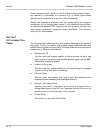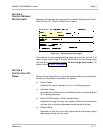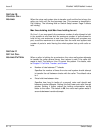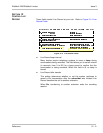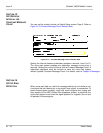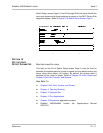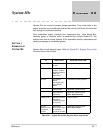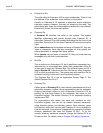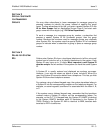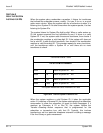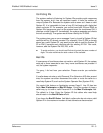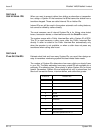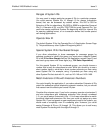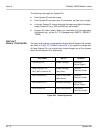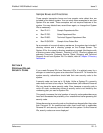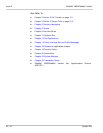
EliteMail VMS/EliteMail Limited Issue 3
Reference 22 - 3
S
ECTION
2
S
PECIAL
S
YSTEM
ID
FOR
N
UMBERED
G
ROUPS
You may allow subscribers to leave messages for message groups by
pressing numbers to identify the group, instead of spelling the group
name. To allow subscribers to do this, you enter a special System ID in the
ID for Num Groups
field on Application Screen Page 6, and start each
group name with three digits (
e.g.
,
234 Sales Department
).
To send a message to a message group by number, a subscriber first
presses a special System ID for numbered groups, then the group
number. Because the numbers used for message groups may duplicate
other System IDs, the system uses the special System ID for numbered
groups to indicate when a subscriber is going to press a message group
number.
S
ECTION
3
R
ULES
FOR
S
YSTEM
ID
S
Callers enter System IDs from a touchtone telephone to tell the voice mail
system how to route the call or to identify themselves to the system. Each
System ID may have up to 10 digits.
Most important, each System ID
must be unique
. No two entities in the system can have the same System
ID.
A System ID is usually entered and displayed as numbers on-screen.
However, it can also be shown as letters or even include
$
. When
$
is
used, the System ID cannot be dialed from a telephone. This lets you hide
System IDs from direct telephone access.
For systems using a lettered keypad map, the system translates letters in
a System ID into the corresponding numbers on the telephone keypad. For
example, on some keypads, touchtone 2 is associated with the letter A, B,
or C.
If the system uses a lettered keypad map, remember that the touchtone
numbers make a System ID unique, not the corresponding letters. For
example, on the Q=7, Z=9 keypad map, the System ID
SANDY
is identical
to the System
RANDY
, because each ID translates to the System ID
72639. Similarly, the System ID AAA is identical to BBB, because both
translate to 222 in touchtones.



